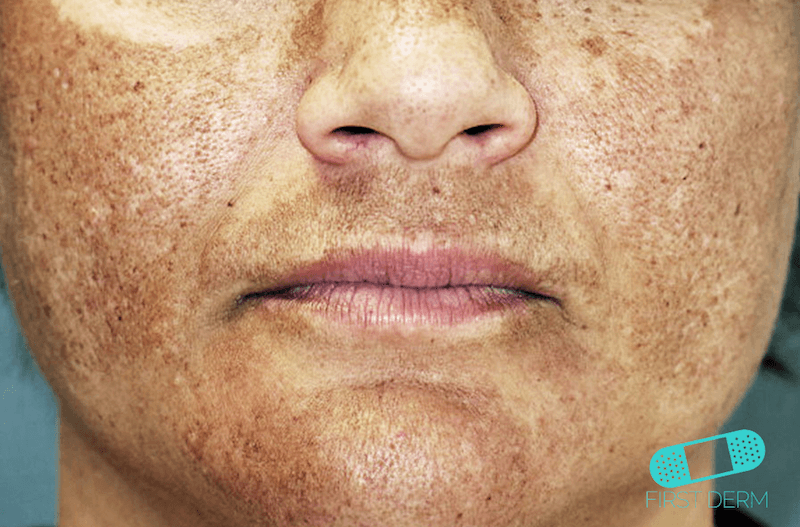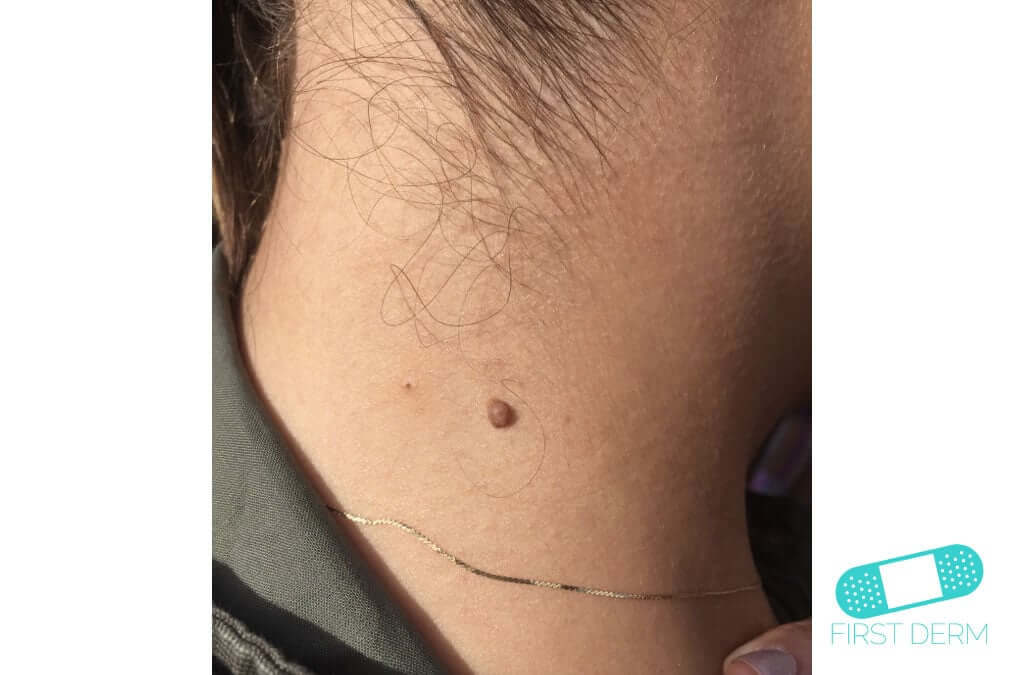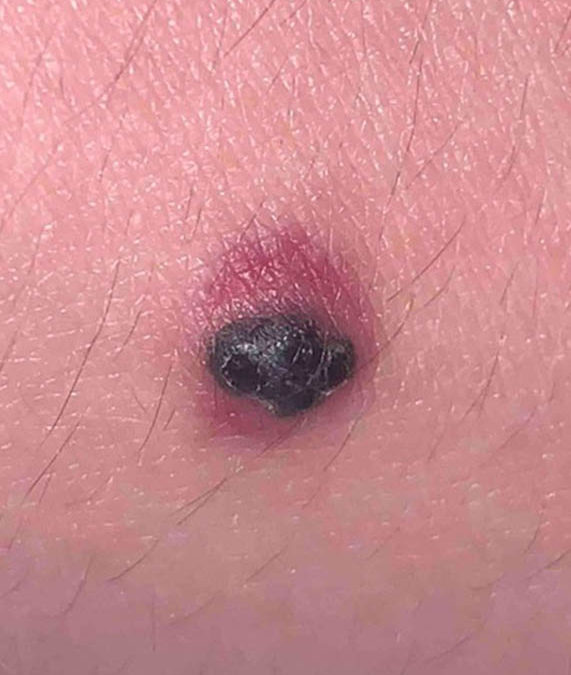Melasma, previously known as chloasma, presents as gray-brown, irregularly shaped, persistent spots on the face. This skin condition is most common on the face of women.


Melasma, previously known as chloasma, presents as gray-brown, irregularly shaped, persistent spots on the face. This skin condition is most common on the face of women.

An intradermal nevus is a classic type of mole or birthmark, with the same degree of pigmentation as the surrounding skin. It appears as an elevated, dome-shaped bump on the surface of the skin.

Nodular melanoma is an invasive form of melanoma which accounts for roughly one fourth of diagnosed melanomas. It is characterized by being faster developing, meaning it quickly grows downwards into the deeper layers of skin.
A port-wine stain is a birthmark caused by a kind of malformation of the skin’s small blood vessels. It is a rare condition, occurring on 0.3% of newborns.
Seborrheic keratosis, also called senile warts, is a very common skin condition marked by light brown, tan brown, dark brown, black and variably pigmented spots. The warts are slightly raised with a clear edge and waxy.
Stork bites and angel kisses are a common type of birthmark seen in newborns. These salmon-colored patches are temporary and benign. They usually appear more clearly when the child gets upset or screams.
Hemangiomas can develop during the child’s first few weeks to clear red, raised skin lesions. Nearly 5% of children have hemangioma, and they are common in premature babies. Hemangioma is completely harmless, unless the lesions obscure the child’s vision and in that case need to be treated.
Moles are brown, round, raised and sometimes hairy birthmarks that usually do not disappear by themselves over time. They are usually harmless but it is important to keep track of the changes.
A dermatofibroma is a firm, small, lightly pigmented benign growth of the dermis (deeper layer of the skin) which is harmless. The growth may be elevated after insect bites or a splinter.
A mongolian spot is a birthmark that looks a lot like a bruising of the skin. Does your child have mongolian spots?
Hyperpigmentation is darkened areas of the skin due to sun damage or inflammation. This is caused by excessive production of melanin (the pigment that produces darker color in the skin).
Birthmarks are spots on the skin caused by an accumulation of either small blood vessels (red marks) or pigmentation (brown spots). They can be seen from the time of birth, but they may also develop later.